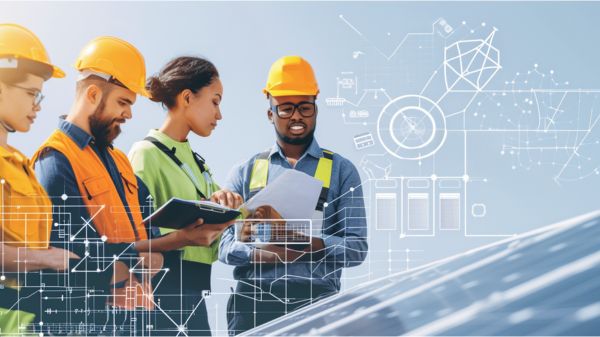Looking to get the most out of your solar energy system? This essential maintenance guide has got you covered. Discover the key steps to maximizing your system’s output and ensuring optimal performance.
From regular cleaning and inspection to checking and replacing worn-out components, you’ll learn how to keep your solar energy system running smoothly.
With proper wiring and connection, along with safety measures and precautions, you’ll feel confident in your system’s efficiency.
Start harnessing the power of the sun and belong to the future of sustainable energy.
Key Takeaways
- Regular cleaning and inspection are crucial for maintaining peak efficiency of solar panels.
- Checking and replacing worn-out components is necessary to ensure optimal performance and prevent breakdowns.
- Monitoring and optimizing system performance through remote monitoring and diagnostic tests helps identify and address issues.
- Proper wiring and connection, as well as implementing safety measures and precautions, are essential for optimal energy output and safety.
Regular Cleaning and Inspection
To ensure optimal performance of your solar energy system, you should regularly clean and inspect it.
Cleaning your solar panels is crucial for maintaining peak efficiency. Dust, dirt, and debris can accumulate on the surface of the panels, reducing their ability to absorb sunlight. Regular cleaning helps to maximize solar panel efficiency and ensures that your system is generating the maximum amount of energy possible.
Inspections are also important to identify any potential issues or damage caused by weather impact. Harsh weather conditions like hail, heavy rain, or strong winds can damage the panels and affect their performance.
Checking and Replacing Worn-Out Components
Regularly check and replace worn-out components to ensure the optimal performance of your solar energy system. Over time, various components of a solar energy system may experience wear and tear, affecting their efficiency and overall lifespan.
By proactively monitoring and replacing these components, you can maximize the energy output of your system and avoid potential breakdowns.
One essential aspect of maintenance is understanding the component lifespan and knowing when to replace them. Solar panels generally have a lifespan of 25 to 30 years, while inverters typically last between 10 to 15 years.
Additionally, regularly employing troubleshooting techniques can help identify and address any issues with components before they worsen.
Monitoring and Optimizing System Performance
Maximize the efficiency of your solar energy system by monitoring and optimizing its performance. Regularly monitoring your system allows you to identify any issues or inefficiencies promptly, ensuring that your system operates at its maximum potential.
To optimize your system’s performance, consider implementing the following:
- Remote Monitoring: Utilize advanced technology to remotely monitor your system’s performance in real-time, allowing you to quickly detect and address any issues.
- Performance Analysis: Regularly analyze your system’s performance data to identify trends and patterns, enabling you to make informed decisions for optimization.
- System Diagnostics: Conduct regular diagnostic tests to identify any faults or malfunctions that may be impacting performance.
- Cleaning and Maintenance: Keep your solar panels clean and well-maintained to ensure optimal energy production.
- Software Updates: Stay up to date with the latest software updates for your monitoring system to benefit from improved performance and new features.
Ensuring Proper Wiring and Connection
Ensure that your solar energy system has proper wiring and connection for optimal performance. Proper wiring and connection are essential for ensuring electrical compliance and managing voltage fluctuations in your solar energy system. By following the right practices, you can maximize energy output and minimize the risk of electrical issues.
To help you understand the importance of proper wiring and connection, consider the following table:
| Issue | Consequences | Solution |
|---|---|---|
| Loose Connections | Reduced energy output, potential hazards | Regularly inspect and tighten connections |
| Incorrect Wiring | Inefficient energy transfer | Hire a professional for correct wiring |
| Inadequate Grounding | Increased risk of electric shock | Install proper grounding system |
Implementing Safety Measures and Precautions
To enhance the safety of your solar energy system, it’s important to implement necessary precautions and safety measures. Here are five essential safety measures and precautions to consider:
- Regularly inspect your solar panels for any signs of damage or wear and tear. This includes checking for loose connections, cracks, or corrosion.
- Develop and practice emergency response procedures. Ensure that all members of your household or team are aware of the proper protocols to follow in case of an emergency, such as a fire or electrical malfunction.
- Adhere to training and certification requirements. Make sure that anyone working on your solar energy system, whether it be installation or maintenance, has the necessary training and certifications to ensure safe and proper handling of the equipment.
- Install safety labels and warnings. Clearly label all components and potential hazards to ensure that anyone working on or near the system is aware of the potential risks involved.
- Keep a detailed record of all maintenance and inspections. This will help you track any potential issues and ensure that your system is operating safely and efficiently.
Conclusion
In conclusion, ensuring the maximum output of solar energy requires regular maintenance and optimization.
By cleaning and inspecting the system, checking and replacing worn-out components, monitoring performance, and implementing safety measures, you can maximize the efficiency of your solar energy system.
Remember, proper wiring and connection are essential for optimal performance.
By following these steps, you can create a picture-perfect system that harnesses the power of the sun to its fullest potential.




